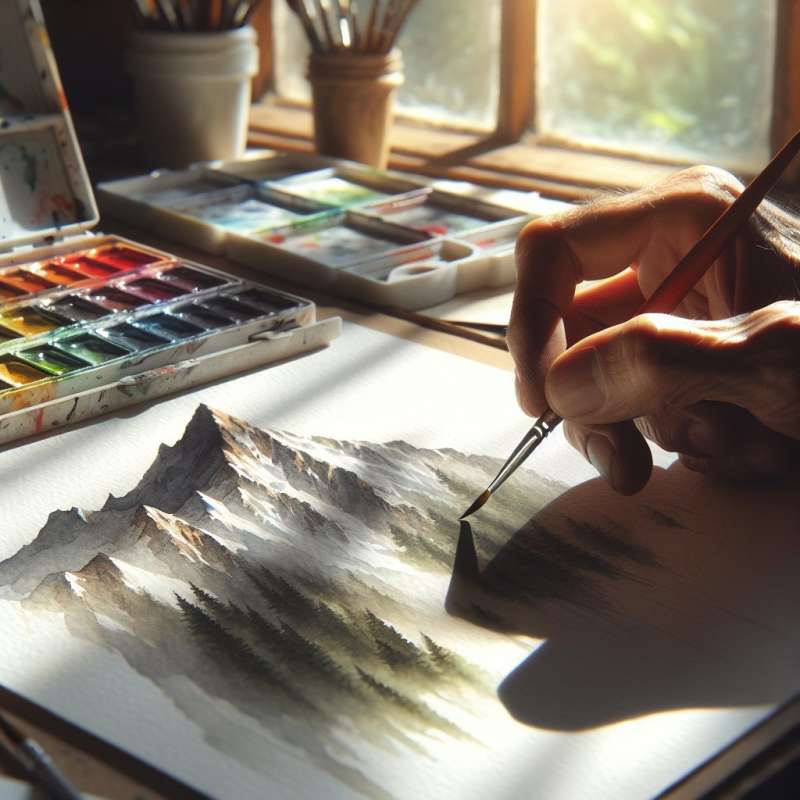
Understanding Wet-on-Dry
Wet-on-dry watercolor technique involves applying wet paint onto dry paper. This approach offers control over shapes and edges, creating sharp, crisp lines ideal for detailed work and layering colors without bleeding.
Material Selection Matters
Paper quality influences your wet-on-dry technique. Opt for heavyweight, rough-textured papers that can absorb water well. High-quality, cotton-based watercolor papers are best for maintaining the paper's dryness between layers.
Brush Choices and Control
Use round or flat brushes with a fine tip for precision. Synthetic or natural sable brushes hold water well, allowing for a smooth application. A light touch is crucial to avoid over-saturating the paper.
Layering and Glazing
Layering is the essence of wet-on-dry. Apply a light wash, let it dry completely, then add another layer. Glazing with transparent colors can create depth and subtle color shifts, enhancing the complexity of your piece.
Mastering Edge Control
Wet-on-dry is perfect for sharp edges. For soft edges, blend out with a clean, damp brush before the layer dries. This technique can be used to soften details and create gradients.
Timing Is Crucial
Precise timing prevents unwanted blooms or backruns. Work swiftly but deliberately, and always allow layers to dry completely to maintain crisp edges and prevent bleeding.
Advanced Wet-on-Dry
Combine wet-on-dry with other techniques like lifting, salt texture, or sgraffito for unique effects. Experiment with masking fluid to preserve white spaces for highlights or dynamic contrasts.Unexpected Watercolor Origins
The world's first watercolors were used in ancient cave paintings, dating back over 40,000 years. Early artists used natural pigments and water to create their art.
What does wet-on-dry technique create?
Soft, blended edges
Sharp, crisp lines
Random color bleeding
Company